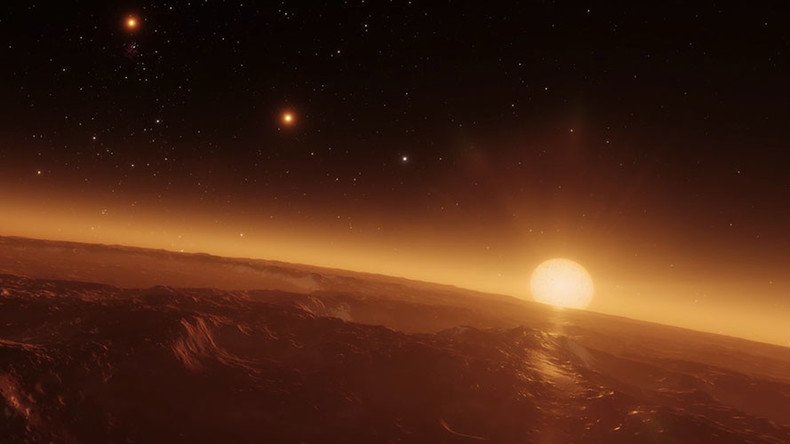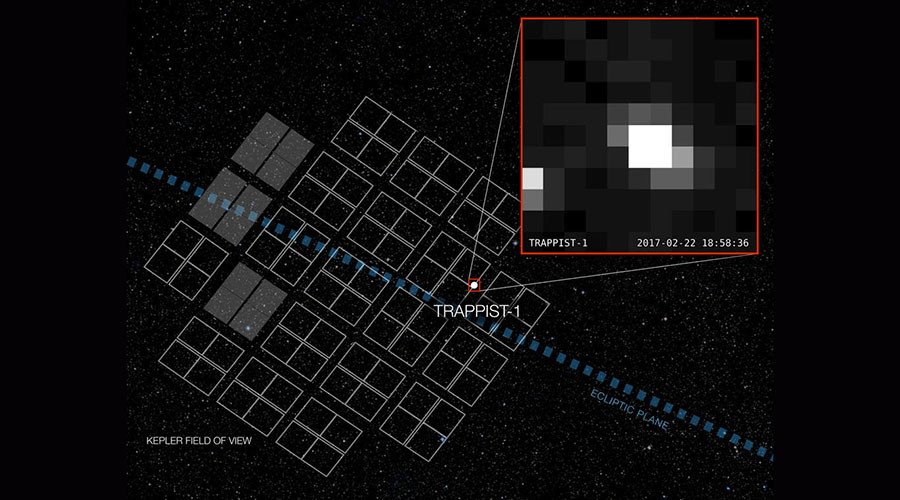NASA releases images of exoplanet-ringed dwarf star TRAPPIST-1 (VIDEO, PHOTOS)

NASA has released new data showing the first glimpses of the TRAPPIST-1 dwarf star system which contains three Earth-sized planets. The space agency revealed last month that seven exoplanets orbit TRAPPIST-1.
The discovery is seen as particularly significant because three of the exoplanets (TRAPPIST-1b, c, and d) are all within the star’s habitable zone, meaning that they could likely contain life-supporting liquid water.
READ MORE: NASA offers stunning 360-degree ‘tours’ of newly-discovered exoplanet (VIDEO)
The star is defined as an “ultra-cool dwarf,” meaning it is much cooler and smaller than our sun.
Between December 15 and March 4, the Kepler spacecraft observed TRAPPIST-1 for 74 days. NASA has released a clip comprising 60 photos of the planetary system that Kepler snapped every minute for one hour on February 22.
NASA explained that the images cover an area of 11 square pixels, or 44 square arcseconds, of the sky – an area the space agency says is equivalent to what would be covered by a grain of sand held towards the sky at arm’s length.

Despite the images not looking incredibly meaningful, they still represent a significant step forward in helping scientists unlock TRAPPIST-1’s secrets.
While the star is at the center of the image, the seven exoplanets are not directly visible. Miniscule changes in brightness can be detected when one of the planets passes in front of the star, however, as shown by the flickering of the pixels in the clip. Astronomers are using sophisticated algorithms to search the data for these dips in brightness.
From these data astronomers can tell the size, orbital period and a transiting planet's distance from its star. Beautiful? We think so. :) https://t.co/c5pjRDHY7P
— NASA Kepler and K2 (@NASAKepler) March 11, 2017
READ MORE: #7NamesFor7NewPlanets: NASA looks for help naming new discoveries, internet obliges
Earlier this month NASA revealed plans to “probe” the exoplanets using the the, still under construction, James Webb Space Telescope which is scheduled to launch in October 2018.
NASA researchers hope the highly advanced telescope will help discover if any of the planets could possibly support life.












